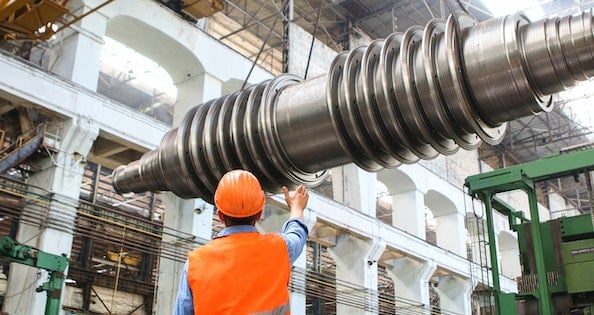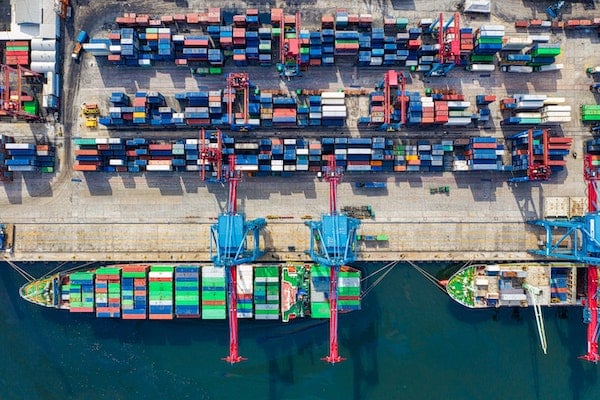Global crises usually force companies to become more resilient and make bold moves that can sometimes turn difficulties into opportunities. With the current global health crisis, companies do have tools at their disposal to help them recover from this period of uncertainty and accelerate for the future. As such, before March 2020, many companies had already launched AI and analytics use case initiatives, but the challenge was how to scale those efforts. Harris Poll found that 55% of companies reported they accelerated their AI strategy in 2020 due to the health crisis, and 67% expected to further accelerate their AI strategy in 2021.
This is true in the manufacturing industry as well, as 64% of manufacturing companies believe that AI is considerably or very important for their businesses. Notably, 28% of manufacturing companies are beginning to integrate AI across key business units and noticing valuable results. The ultimate goal, of course, is AI that is so ingrained and intertwined with the workings of the day-to-day that it’s just part of the business.
In 2022, it is likely that the most successful manufacturing companies will be the ones that are quicker to adapt to supply chain uncertainties, develop efficient and agile operations, and accelerate in embedding sustainability objectives in their day to day. When it comes to delivering these transformational shifts, leveraging the potential of analytics and AI will be critical.

Efficient and Agile Manufacturing Operations
Lean manufacturing strategies are not new but remain at the center of manufacturing companies’ priorities. Preventing machine downtime, streamlining processes, reducing waste, and optimizing inventory management all contribute to reduced operating expenses, higher efficiency, and increased agility when facing major economic fluctuations such as the recent health crisis.
Automation and AI-driven insights play a growing role in finding further room for optimization in manufacturing. More and more, these are developed in combination with Industry 4.0 practices, which incorporate:
- IoT ecosystems with various types of sensors or software in order to communicate through a network to automate and accelerate the manufacturing process
- Real-time data capture and streaming environments to analyze data from all aspects of the manufacturing process to have more agile operations
- Deploying AI at the edge, in the cloud, or embedded in manufacturing systems and industrial machines
These digital technologies will also enable an Information Technology-Operational Technology convergence to support end-to-end digital continuity from design to operations. Digital twins will provide a virtual representation of all of the company’s physical resources (workforce, equipment, warehouses, etc.) to reproduce a real-world management environment in a virtual space. Overall, in order to support manufacturers in materializing significant efficiency and resiliency gains, these different approaches should be developed so that they are owned by business teams and fully embedded in core processes.
Adapt to Uncertain and Variable Supply and Demand
Supply-side constraints from the global health crisis have been a major headwind to the manufacturing sector’s recovery. In fact, shipping bottlenecks and labor shortages have caused increased procurement delays or outright supply shortages for essential components such as raw materials, microchips, and other components. This, in turn, translates into factory disruptions and higher inflation (both in terms of input costs and consumer prices) across many product categories (household goods, electronics, automobiles, etc.).
AI in supply chain and logistics offers a lot of potential for manufacturing companies to update forecasts in real time and accelerate their decision making. Planning and forecasting need to incorporate higher levels of sophistication and sensitivity to disruptions. As the health crisis and global raw materials shortages have demonstrated, simplistic models based on historical data are no longer sufficient. Additionally, these models need to incorporate not only internal historical data, but real-time data from sensors, RFIDs, and scanners, and also be enriched with external datasets such as weather, supplier data, customer data, and logistics data or alternative data. We now see manufacturers using deep learning to both reduce transactions and to increase capacity. Increasingly, they look to AI to increase the efficiency of pallet preparation and accuracy of packing time by eliminating scanning.

Achievable Sustainability Goals
From ESG and net-zero initiatives to a low carbon economy shift, it is evident that the integration of sustainable practices into everyday business practices is now a necessity. According to the International Energy Agency, the industrial sector accounts for almost a quarter of worldwide carbon emissions. Reducing overall energy consumption and carbon emissions has become a main area of focus for manufacturing companies to secure compliance with stricter emissions regulations and targets. By doing so, they also anticipate the planned establishment of a carbon price and need to adjust to a new energy mix.
A BCG study shows that using AI can reduce greenhouse gas (GHG) emissions between 2.6 and 5.3 gigatons of CO2 and could provide $1.3 trillion to $2.6 trillion in value through additional revenues and cost savings. AI and analytics will be used by companies to measure their own carbon footprints and find ways to reduce carbon emissions. For instance, reducing emissions related to electricity consumption requires accurate measurements of the carbon intensity in each country where a company has its own operations. This is why we have just released our CO2 converter plugin that helps companies easily convert electricity consumption into associated GHG emissions.
While GHG emissions are at the forefront of the debate as companies become more actively engaged in fighting climate change, there is more to expect from AI when it comes to sustainability. Reducing waste, for instance by reducing the ocean's plastic pollution, and creating eco-friendly products and ways of production are among other examples. Furthermore, manufacturing companies need to balance operational efficiency and risks to company assets and employees. With advancements in video analytics, building management systems, companies can use AI and analytics to bring workers home safe.
While many think this a long and difficult journey, AI and our ready-to-use industry solutions (e.g., predictive maintenance, outliers detection, demand forecasting, and more) can help achieve great results in weeks instead of months.




